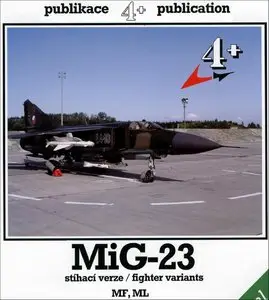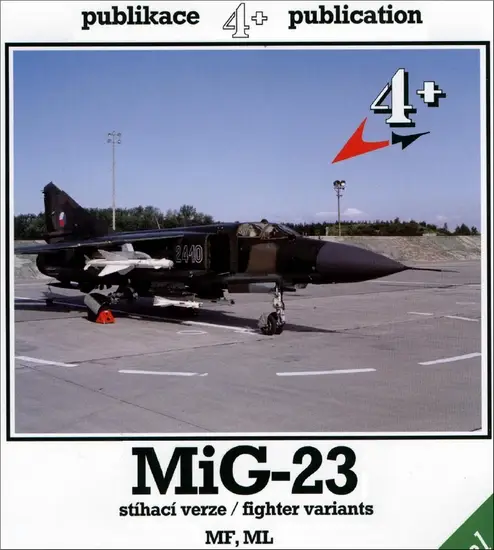Mig-23 : MF, ML By J. Bašný, J. Brázda, M. Ovcácík, K. Susa
Publisher: 4+ Publications 1994 | 52 Pages | ISBN: 8090070833 | PDF | 11 MB
Publisher: 4+ Publications 1994 | 52 Pages | ISBN: 8090070833 | PDF | 11 MB
As the best known product from the OKB MiG construction bureau, the MiG-21 Fishbed, was developed into the most capable PF version Fishbed D (see 4+ publication "MiG-21"). the bureau became aware that designing an entirely new aircraft with higher performance would be a formidable task. Combining high performance with good ma-noeuverability and good short field takeoff and landing was considered particularly difficult. At that time two types of wing were used to attain supersonic speeds, delta and sharply swept. The former was used on the Mirage III, MiG-21, Su-9/lS, F-102 and F-106, whilst the latter plan form appeared on the MiG-19, Su-7, BAC Lightning, F-100, F-101 and F-105. All these designs were characterised by long takeoff and landing distances and high approach speeds demanding large angles of attack. At that time radar and electronic equipment was heavy and engines were inefficient demanding large fuel capacity. Developing an all weather fighter from a day fighter involved installation of high performance radar and a capacity to carry long range ait-to-air missiles. Additionally, in this role greater range is demanded. All of these changes result in weight increases which are reflected in performance penalties. Several solutions to these problems were proposed including wing with more sophisticated high lift devices and angles of sweep as sharp as 60° (e. g. Mirage F.l, F-4 Phantom II, and F-8). More exotic designs were tried including fuselage mounted dedicated lift engines (e.g. an experimental version of Mirage III). Finally the solution of variable swept wings was successfully adopted, with minimum sweep for takeoff and maximum for supersonic and transonic flight at low altitude (this concept is discussed in some detail in our companion monograph "Su-22"). OKB MiG did improve the MiG-21 by installing SPS "blown" landing flaps, but the new Soviet AF High Command specification for a new generation fighter could not be met by an upgraded MiG-21. Based on research by the TsAGI research institute and probably from KGB intelligence reports the designers led by A. I. Mikoyan and, later, his deputy R Belyakov decided to design two fighters sharing as many components as possible but each exploring a different concept The first was fitted with fuselage mounted lift engines and the second variable sweep wings. Unusual for the MiG bureau both designs featured side air intakes to allow for the installation of radar scanners of greater diameter. The tail appendages were almost identical.



